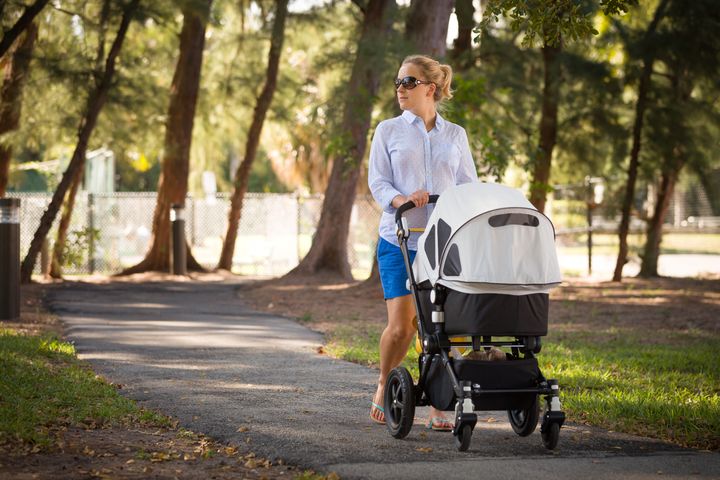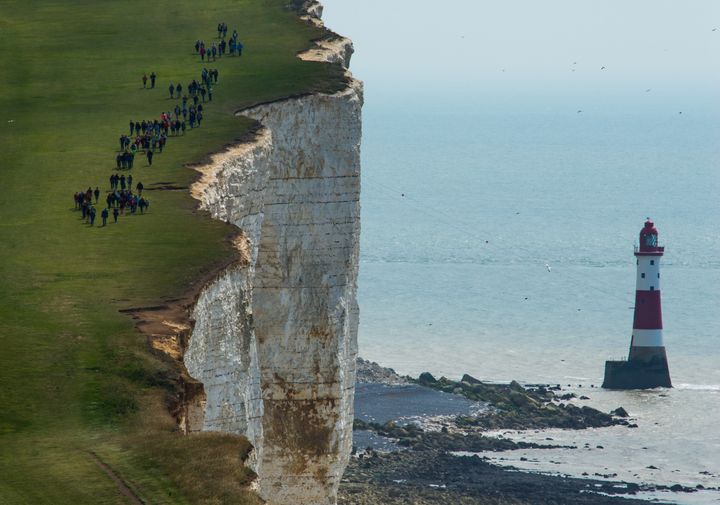
When it comes to making the most of England’s scenic landscapes - even if it’s the patch of grass that happens to be your local park or common - there really is no better way to explore the hills and trails of the UK than on foot.
We all know walking is good for us: it burns calories, it gets our calf muscles going (and growing), it offers cardiovascular benefits and keeps us feeling energised.
“What’s not quite so appreciated is what being outside can do,” explains personal trainer and lifestyle coach, Johanna Green, who runs outdoor fitness classes in London.
“According to studies done recently, people just looking at a photograph or painting of nature scenery, water, etc.- even just looking at a nature scene through the window of the car or a picture - their bodies produced feel-good hormones, endorphins, and calming hormones. So if we’re walking as well, then we’re also getting those feel-good hormones from the exercise itself.”
Keen to try hill walking but not sure where to begin? Here’s everything you need to know, from the kit to invest in to the most glorious places to walk in the UK.

All the gear
The great thing about hill walking? You don’t need an enormous amount of kit or expensive equipment to get going. But you do need to think about what you’re wearing.
“It is essential to have good-fitting pair of walking shoes/boots (waterproof) and socks,” advises Green.
“It’s important to gradually walk longer distances in these shoes/boots and socks. If/when any rubbing or blisters occur, get a ‘blister plaster’ on the area immediately.”
Now, shoes are important, but total beginners can use a good pair of trainers when they first get started. Once they’re walking five or six miles plus a walk, then it’s crucial to invest in a better pair of walking shoes or boots.
Also key? Socks. Opt for well-fitted socks made from natural fibres like wool. Beware of cotton which gets soaked easily and takes ages to dry.
Green also recommends that newbie walkers get a few moisture-wicking articles of clothing (trousers, T-shirts, a waterproof jacket), which shed water easily and won’t leave you feeling miserable if you end up in a downpour.
“Getting the clothing right is really important for making it a pleasurable experience,” Green explains.
A rucksack is also handy. Pack nuts and fruit for healthy snacks on your climb, as well as plenty of water.

Ease your way in
“For beginners I’d recommend they aim for 10,000 steps per day (this is around five miles in distance, and around one-and-a-half hours walking time, all depending on stride length and speed of walking), before they go on anything longer than a six-mile walk or hike,” says Green.
She then advises focusing on doing a brisker walk a few times a week - purposeful walking that ups the cardiovascular fitness component. Once you are comfortably walking this - five days a week and 10,000 steps a day - then it’s time to start increasing your distance and exploring new places.
If you’re time-poor and thinking that you don’t have 10 minutes a day to spend on yourself, let alone 1.5 hours, hear us out: you can easily integrate 10,000 steps as part of your everyday exercise, whether you’re pushing your baby’s buggy around the park to get your little one to snooze, taking the dog for a walk, or skipping the bus to the train station and doing the 20-minute walk there instead.
You can also make walking more of a priority during the workday, leaving your office building and going further afield to get your lunch, or taking a half-hour stroll to the next Tube stop before heading home.
The best part? You can find a scenic walk minutes from your home, at your local park. Or you can go further afield...

Book a walking holiday
There are plenty of ways to turn a hobby for hill-walking into a family passion. The easiest? Book a holiday to one of the UK’s stunning walking spots in the glorious British countryside.
Green’s top recommendations for walkers of all ability levels? South Downs National Park; the Chilterns; Shropshire, Dartmoor, Devon; Brecon Beacons, South Wales; Snowdonia, North Wales; the Peak District and the Lake District.
Top tip: if you’re a beginner, find out which trails are five or 10-mile ones so you don’t end up on a more challenging 20-mile hike (especially not with your four-year-old in tow). A lot of these places have guides you can hire.
Also, check out HF Holidays: the agency specialises in guided walking holidays in the UK’s most scenic places.

Make some friends
Hill walking isn’t just good for mind and body: it can be a great way to bond your family together - or cultivate new friendships.
The Ramblers hosts walks in urban areas and country idylls for members, as well as group walks that cater to your needs (dog or family-friendly, health-orientated, technical for those looking for more of a challenge, or walks geared to beginners).
The Walking For Health scheme can help you get involved in local walks with trained leaders, even if you’re suffering from health issues like asthma, diabetes or cancer. Local council websites will also give you information on popular trails, with downloadable maps and information on weekly walks that you can join.
You may be interested in pursuing a more specialist type of walking, like Nordic Walking, which uses poles to work the upper body and core as well as the lower body. Nordic Walking UK has information on where to find a walk near you.